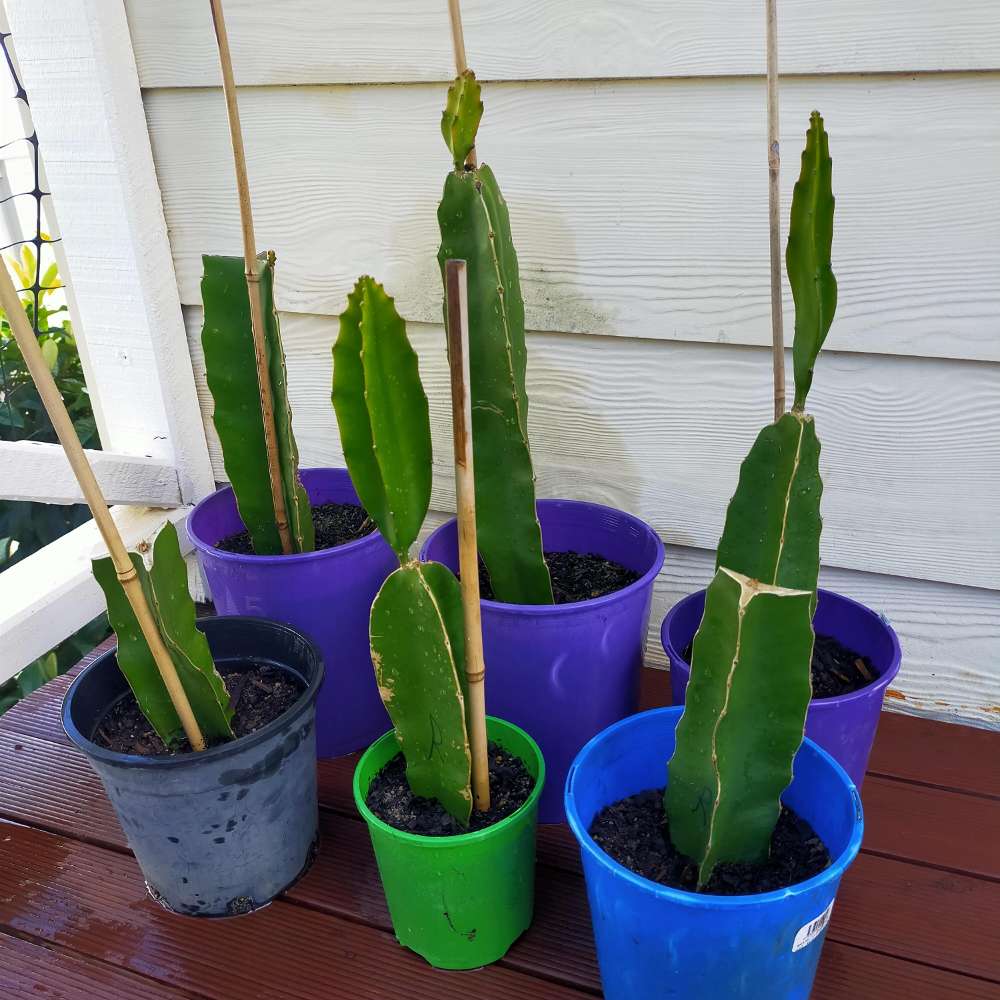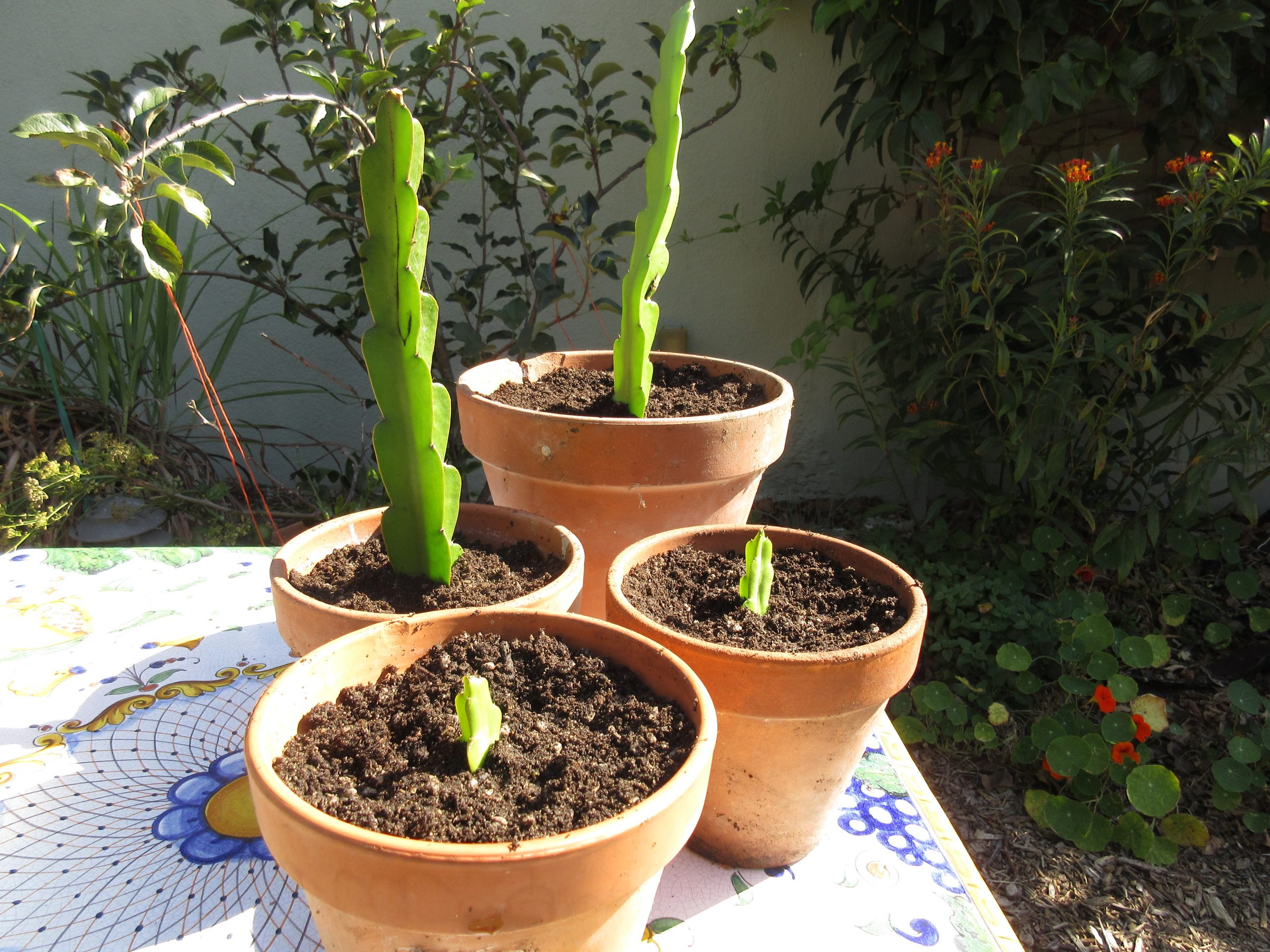To propagate dragon fruit cactus, cut a healthy stem segment and let it callus before planting it in well-draining soil. Dragon fruit cactus propagation involves taking a healthy stem segment, allowing it to callus, and then planting it in soil that drains well.
Dragon fruit, also known as pitaya, is a tropical fruit that belongs to the cactus family. It is known for its vibrant colors, unique shape, and delicious taste. Propagating dragon fruit cactus is a popular method for expanding your collection or sharing the plant with others.
By following the simple steps outlined below, you can successfully propagate your own dragon fruit cactus plants and enjoy the beauty and flavor they offer.

Credit: dragonfruitobsession.github.io
Understanding Dragon Fruit Cactus Propagation
Dragon Fruit Cactus, also known as Pitaya, is a climbing cactus native to Central and South America. It is widely grown for its unique fruit that comes in various colors, including white, pink, and yellow. Apart from being a delicious tropical fruit, Dragon Fruit Cactus is also popular for its ornamental value, thanks to its stunning flowers that bloom only at night.
Dragon Fruit Cactus can be propagated in several ways, such as through stem cuttings, seeds, grafting, and tissue culture. Stem cuttings are the most common method and involve taking a healthy section of a mature stem and allowing it to root in well-draining soil or water. Seeds can be extracted from ripe fruits and germinated in a suitable growing medium. Grafting is another technique that involves joining a Dragon Fruit Cactus cutting onto a different cactus rootstock. Tissue culture, though less common for Dragon Fruit Cactus, is a laboratory-based method that involves growing plants from small tissue samples.
| Reason | Description |
|---|---|
| Expanding Collection | Propagating Dragon Fruit Cactus allows enthusiasts to grow new plants and add them to their collection, enhancing the variety and beauty of their garden. |
| Sharing with Others | By propagating Dragon Fruit Cactus, gardeners can share the joy of growing this unique plant with friends, family, and fellow gardening enthusiasts. |
| Replacement or Regrowth | Propagating Dragon Fruit Cactus can be useful for replacing old or damaged plants or encouraging regrowth from unhealthy or dying plants. |
| Commercial Production | For commercial growers, propagating Dragon Fruit Cactus is essential to meet the demand for this sought-after fruit and capitalize on its popularity. |
How to Propagate Dragon Fruit Cactus: Step by Step Guide
Selecting The Right Propagation Method
-
Seed propagation:
- Begin by selecting ripe dragon fruit and extracting the seeds.
- Clean the seeds and allow them to dry for a few days.
- Prepare a seed-starting mix and place the seeds on top.
- Lightly cover the seeds with a thin layer of the mix.
- Keep the soil moist and warm, around 70-80°F.
- In a few weeks, the seeds will begin to germinate.
- As the seedlings grow, transplant them into individual pots.
- Provide adequate sunlight and water to promote healthy growth.
-
Stem cutting propagation:
- Choose a healthy stem segment from an existing dragon fruit cactus.
- Allow the cutting to dry for a few days to prevent rotting.
- Prepare a well-draining potting mix.
- Insert the stem cutting into the soil, ensuring it is stable.
- Water the cutting lightly, and then wait for a few weeks.
- Roots will start to emerge, indicating successful propagation.
- Once established, continue caring for the new plant as needed.
Caring For Dragon Fruit Cactus Cuttings
If you want to propagate a dragon fruit cactus, it is important to take good care of the cuttings. Start by preparing the cuttings for planting. Ensure that you choose healthy cuttings from a mature dragon fruit cactus. These cuttings should be about 12 to 18 inches long, as this length promotes successful rooting.
When it comes to choosing the right soil and pot for the cuttings, opt for a well-draining cactus potting mix. This mix should contain a combination of perlite, coarse sand, and organic matter. Additionally, make sure that the pot has adequate drainage holes to avoid waterlogging.
Proper watering techniques are crucial for the development of new cuttings. Ensure that you water the cuttings thoroughly after planting. However, once the cuttings are established, be careful not to overwater them; allow the top inch of soil to dry out before watering again.
Techniques For Successful Dragon Fruit Cactus Propagation
Successful propagation of dragon fruit cactus requires optimizing temperature and light conditions, providing the right nutrients, and implementing effective pest and disease control measures.
Temperature and Light Conditions: Dragon fruit cactus thrives in warm environments with temperatures ranging between 65-80°F (18-27°C). When propagating, maintain a temperature of around 75°F (24°C). Ensuring that the plant receives adequate sunlight is crucial for its growth. Place it in a location where it can receive at least 6-8 hours of direct sunlight daily.
Providing the Right Nutrients: To promote healthy growth, use a well-draining soil mix and apply a balanced fertilizer with a ratio of 10-10-10. Feed the plant every 4-6 weeks during the growing season (spring and summer) and reduce or stop feeding during winter.
Protecting Against Pests and Diseases: Regularly inspect the dragon fruit cactus for signs of pests such as mealybugs, spider mites, or scale insects. Use organic insecticides or soap sprays to control infestations. Prevent fungal and bacterial diseases by ensuring good air circulation and avoiding over-watering.
Monitoring The Growth Of Dragon Fruit Cactus Cuttings
Signs of healthy growth in Dragon Fruit Cactus cuttings include the emergence of new roots and the development of green, plump stems. As the cuttings take root and establish themselves, they may display increased firmness and stability. It is important to regularly check for these positive indicators.
Troubleshooting common issues during propagation is essential to ensure successful growth. Be on the lookout for signs of rot or fungal infection, indicated by discoloration or soft spots on the cuttings. If such issues arise, it is advisable to remove the affected cuttings to prevent further spread.
When the key indicators for transplanting mature Dragon Fruit Cactus are observed, it is time to give them a new home. Look for mature stems, at least six inches long, and healthy root systems. Transplanting these mature cuttings into well-drained soil and providing support for their climbing growth will help them thrive.
Harvesting And Enjoying The Fruits Of Your Labor
Understanding the fruiting timeline of Dragon Fruit Cactus:
Dragon Fruit Cactus, or Pitaya, is a fascinating plant that offers not only beautiful blooms but also delicious fruits. The fruiting timeline of Dragon Fruit Cactus can vary depending on various factors such as the variety of cactus, growing conditions, and care. Generally, Dragon Fruit Cactus begins to produce fruits within one to two years of planting, although it could take longer.
Knowing when to harvest ripe Dragon Fruit is crucial to enjoy its exotic flavors fully. One way to determine fruit ripeness is by observing the color of the fruit. Ripe Dragon Fruits often have a vibrant color, ranging from pink to deep red. Additionally, a ripe fruit usually yields to gentle pressure. To harvest, simply twist the fruit gently to detach it from the plant.
| Dragon Fruit Salsa | Dragon Fruit Smoothie Bowl |
|---|---|
| Combine diced Dragon Fruit, tomatoes, onions, jalapenos, lime juice, and cilantro for a refreshing salsa option. | In a blender, blend Dragon Fruit, frozen berries, almond milk, and honey until smooth. Top with granola, fresh fruits, and coconut flakes for a nutritious smoothie bowl. |
| Dragon Fruit Sorbet | Dragon Fruit Salad |
| In an ice cream maker, process blended Dragon Fruit, sugar, and lemon juice until frozen. Enjoy a delightful sorbet. | Toss sliced Dragon Fruit with mixed greens, toasted almonds, feta cheese, and a tangy vinaigrette for a refreshing salad. |
Frequently Asked Questions Of How To Propagate Dragon Fruit Cactus
How Do You Propagate Dragon Fruit Cactus?
To propagate a dragon fruit cactus, cut a mature stem or leaf segment, let it dry for a few days, then plant it in well-draining soil. Water sparingly and provide indirect light. The cutting will develop roots within a few weeks, and you can transfer it to a larger pot once established.
What Is The Best Time To Propagate Dragon Fruit Cactus?
The best time to propagate dragon fruit cactus is during the spring or summer months. This is when the plant is actively growing and has the highest chance of successful root development. Avoid propagating during the winter or when the plant goes into its dormant phase.
Can You Propagate Dragon Fruit Cactus From Seeds?
Yes, you can propagate dragon fruit cactus from seeds, but it can be a longer and more challenging process compared to using cuttings. Seeds need to be extracted from ripe dragon fruit, dried, and stratified before planting. It may take several months for the seeds to germinate, and the resulting plants may have variations in characteristics.
Conclusion
In this guide, we have explored the step-by-step process of propagating dragon fruit cactus. By following these methods, you can successfully grow your own dragon fruit plants and enjoy their exotic fruits. Remember to choose healthy cuttings, provide proper care and maintenance, and be patient throughout the propagation journey.
With a little effort and knowledge, you can create a thriving dragon fruit garden that will be the envy of your friends and neighbors. So, start propagating your dragon fruit cactus today and embark on a rewarding and fruitful gardening adventure.

